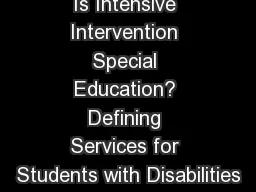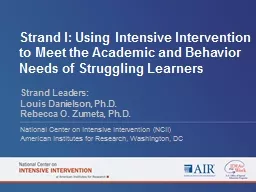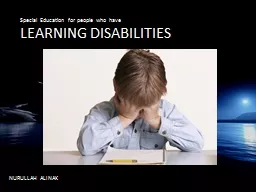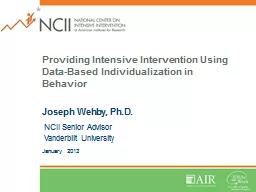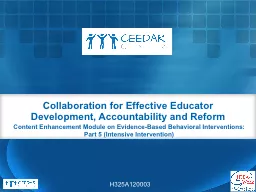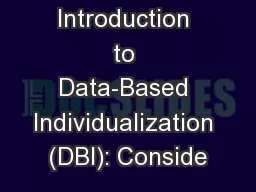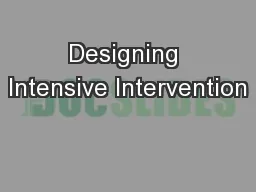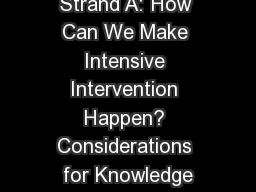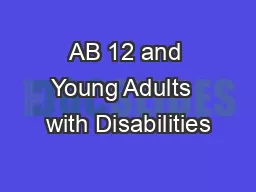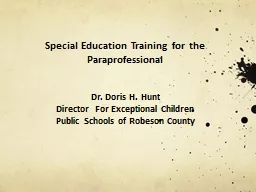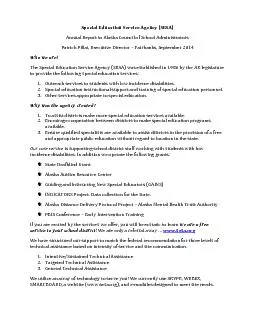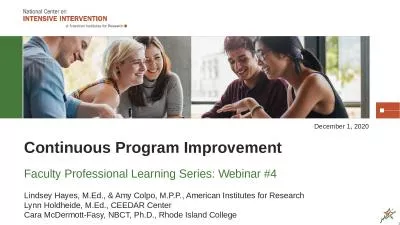PPT-Is Intensive Intervention Special Education? Defining Services for Students with Disabilities
Author : tatyana-admore | Published Date : 2018-10-14
Lou Danielson amp Teri Marx American Institutes for Research J David Sienko Rhode Island Department of Education Glenna Gallo NASDSEWashington State Board of
Presentation Embed Code
Download Presentation
Download Presentation The PPT/PDF document "Is Intensive Intervention Special Educat..." is the property of its rightful owner. Permission is granted to download and print the materials on this website for personal, non-commercial use only, and to display it on your personal computer provided you do not modify the materials and that you retain all copyright notices contained in the materials. By downloading content from our website, you accept the terms of this agreement.
Is Intensive Intervention Special Education? Defining Services for Students with Disabilities: Transcript
Download Rules Of Document
"Is Intensive Intervention Special Education? Defining Services for Students with Disabilities"The content belongs to its owner. You may download and print it for personal use, without modification, and keep all copyright notices. By downloading, you agree to these terms.
Related Documents

